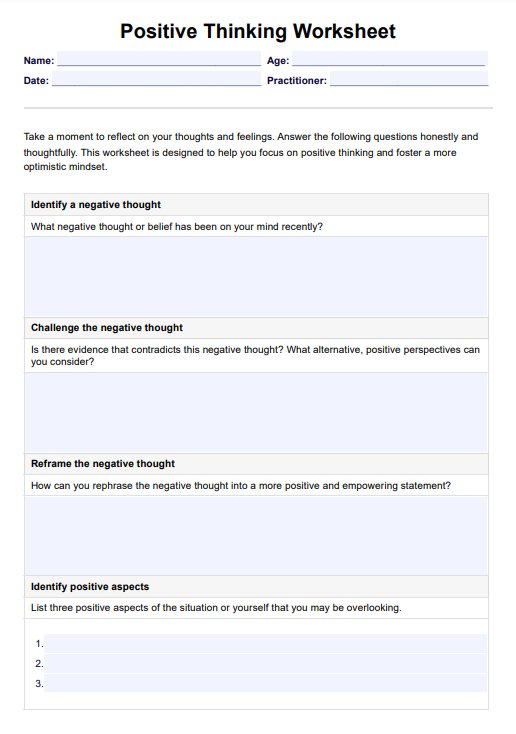Positive Thinking Worksheets are crafted by designing structured forms with sections prompting users to identify negative thoughts, challenge them, reframe them positively, and engage in exercises that foster a positive mindset.

Positive Thinking Worksheet PDF
Download Positive Thinking Worksheets to help clients counter negative thinking and navigate challenges with resilience.
Use Template
Positive Thinking Worksheet PDF Template
Commonly asked questions
These are commonly utilized by individuals seeking to enhance their mental well-being, therapists guiding clients through cognitive restructuring, and anyone aiming to cultivate a more optimistic outlook on life.
Positive Thinking Worksheets are used at various times, including therapy sessions to address specific concerns, as part of daily routines for personal development, or during challenging periods to promote a positive mindset.
EHR and practice management software
Get started for free
*No credit card required
Free
$0/usd
Unlimited clients
Telehealth
1GB of storage
Client portal text
Automated billing and online payments











